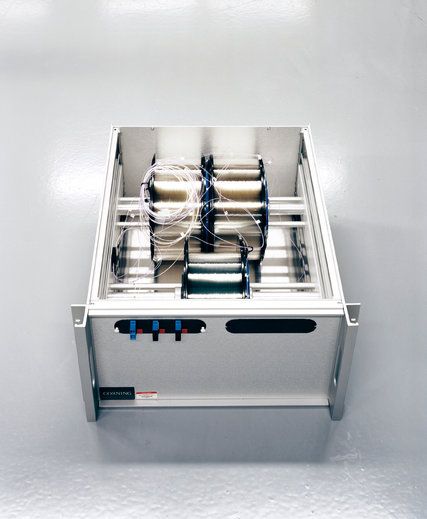Eliminating the advantage of speed
The NYT has this longish article on the story behind IEX, a ‘fair’ stack exchange explicitly designed to neutralize the advantages of high speed traders (at the core this involves the 38-mile coil of fiber optic cable in a box) depicted below. In this article an IEX employe lays out a theory of why there are so many Russians involved in high speed trading operations, which pretty much confirms my theory on the relation between high speed trading and soviet economics from 2012:
Sokoloff was Russian, born and raised in a city on the Volga River. He had an explanation for why so many of his countrymen wound up in high-frequency trading. The old Soviet educational system channeled people into math and science. And the Soviet-controlled economy was horrible and complicated but riddled with loopholes, an environment that left those who mastered it well prepared for Wall Street in the early 21st century. “We had this system for 70 years,” Sokoloff says. “The more you cultivate a class of people who know how to work around the system, the more people you will have who know how to do it well.”

Coil of fiber optic cable in a server rack
This box kept at the facility in Secaucus, N.J., contains a 38-mile coil of fiber-optic cable that creates a slight delay in the processing of orders, which levels the playing field among traders. Credit Stefan Ruiz for The New York Times Photo by: Stefan Ruiz for The New York Times
